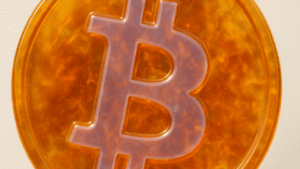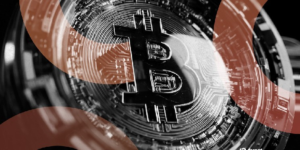Crypto P2P lending refers to a practice of lending assets without the involvement of a middleman. Such loans rely on collateral material originally owned by borrowers.
What Is Peer-to-Peer (P2P) Lending?
To better understand P2P lending, it is important to have a firm grasp of the traditional banking model. Typically, if you want to take out a loan, you must fill out an application and submit it to the bank. The bank will then assess your creditworthiness and any other factors they deem relevant before deciding on whether or not they will grant you the loan and the terms you will be offered. Once terms have been agreed, the bank will then source the capital from either the central bank or the savings deposits of their other banking customers.
There are a few challenges involved with this method:
- Banks generally operate with a strict risk management strategy, which automatically disqualifies those with poor credit scores or a lack of credit history.
- Banks usually offer poor rates and often apply fees to the total loan value, which increases the price of repayments.
- The traditional banking system can be slow due to a lack of innovation and failure to adopt new technology.
Traditional P2P Lending
Traditional P2P lending occurs when fiat currencies, such as USD, GBP, or YEN, are exchanged by two parties outside the conventional banking system. In these instances, peer-to-peer lending websites, such as Prosper, Lending Club, and Peerform, offer multiple loans and have competitive interest rates and low fees. These P2P platforms usually highlight their borrower qualifications upfront to save time during the application process.
Cryptocurrency P2P Lending
Just like traditional P2P loans, loans that occur on the blockchain still require collateral, usually deposited in either fiat or digital currencies. In most cases, the collateral is held on an intermediary website or crypto P2P platform, where it will be held in a smart contract in accordance with the terms stipulated in the agreement.
The maximum quantity an individual can borrow is decided by the value of the collateral given. This is typically known as the collateral factor or collateral ratio. This system is implemented due to the fact that there is no creditworthiness evaluation or past history to consider because the lender generally does not reveal their identity. On the other side of the transaction, lenders earn interest from borrowers, which is usually set at a pre-agreed rate. In some cases, crypto P2P platforms offer incentives and other bonuses to lenders in order to attract more volume to their platform so that their lending ecosystem can function adequately.
Some of the most popular crypto-based P2P lending projects include:
These decentralized platforms make lending available to anyone with access to the internet and sufficient funds to put down as collateral. These services are open 24 hours a day, seven days per week, and operate much more efficiently than traditional banking services. It is one of the reasons for the massive surge in popularity over the past couple of years.
With that said, one of the main criticisms of crypto P2P lending is the steep learning curve associated with the process, especially for those who are unfamiliar with the fundamentals of cryptocurrency transactions. The UX of most major platforms is relatively clunky, and there is still an element of uncertainty towards the safety and security of these platforms. Unfortunately, many of the major lending platforms have experienced hacks and exploits in some respect, which has caused both lenders and borrowers to lose funds and suffer financial losses.
As the industry continues to grow and find new ways to iron out these kinks, it’s likely that crypto P2P lending platforms will begin to play a larger role in our collective financial future, which should pave the way for a more simple, accessible, and cost-effective form of lending.
Author:
Michael is keen on all things decentralized, cares deeply about the planet, and supports initiatives that lead to a fairer society. In his own words, his spare time is occupied by trading, traveling, and charitable projects.



